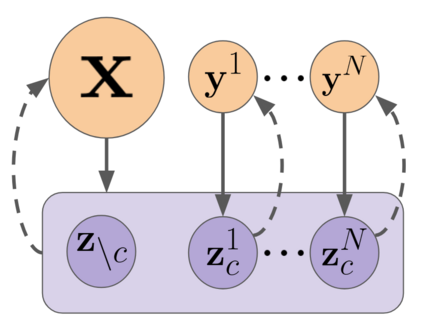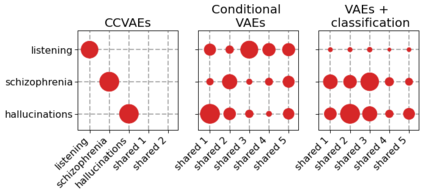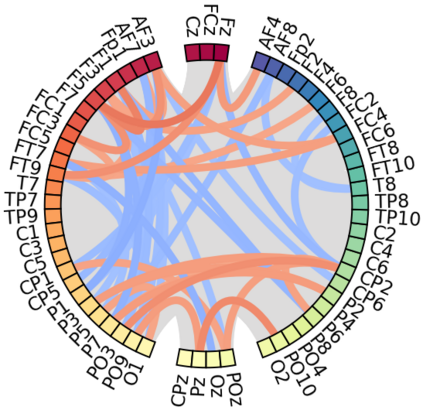Neuroimaging techniques produce high-dimensional, stochastic data from which it might be challenging to extract high-level knowledge about the phenomena of interest. We address this challenge by applying the generative modelling framework to 1) classify multiple pathologies and 2) recover the neurological mechanisms of those pathologies in a data-driven manner. Our framework learns generative factors of data related to pathologies. We provide an algorithm to decode those factors further and observe how different pathologies affect observed data. We illustrate the applicability of the proposed approach to identifying schizophrenia, either followed or not by auditory verbal hallucinations. We further demonstrate the ability of the framework to learn disease-related mechanisms consistent with current domain knowledge. We also compare the proposed framework with several benchmark approaches and indicate its classification performance and interpretability advantages.
翻译:神经成像技术产生高维的、随机的数据,从这些数据中获取关于令人感兴趣的现象的高级知识可能具有挑战性。我们通过应用基因建模框架来应对这一挑战,将基因建模框架应用于(1) 对多种病理进行分类,(2) 以数据驱动的方式恢复这些病理的神经机制。我们的框架了解与病理有关的数据的基因化因素。我们提供了一种算法,进一步解析这些因素,并观察不同病理如何影响观察到的数据。我们说明了拟议办法是否适用于确定精神分裂症,无论是否采用听觉性口头幻觉。我们进一步展示了框架学习与当前领域知识一致的疾病相关机制的能力。我们还将拟议框架与若干基准方法进行比较,并表明其分类性能和可解释性。









